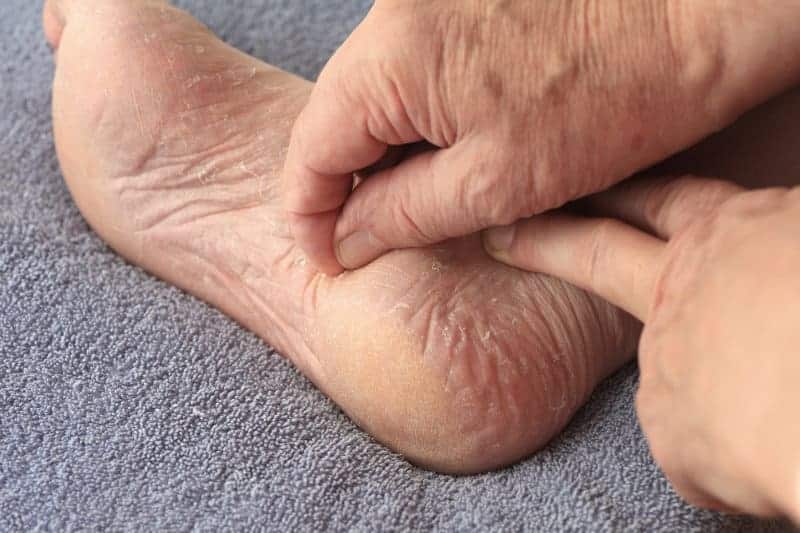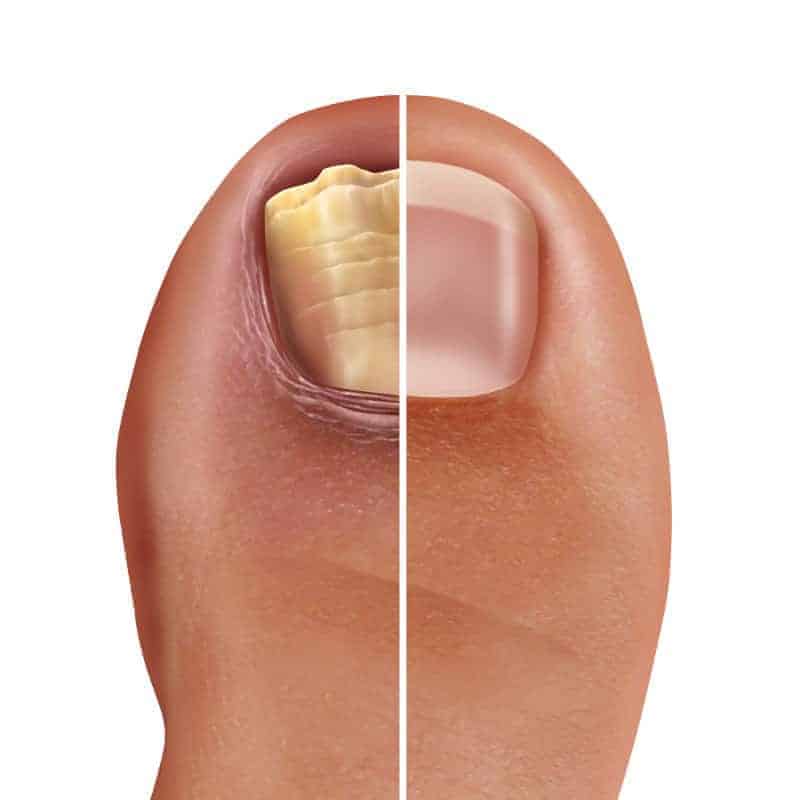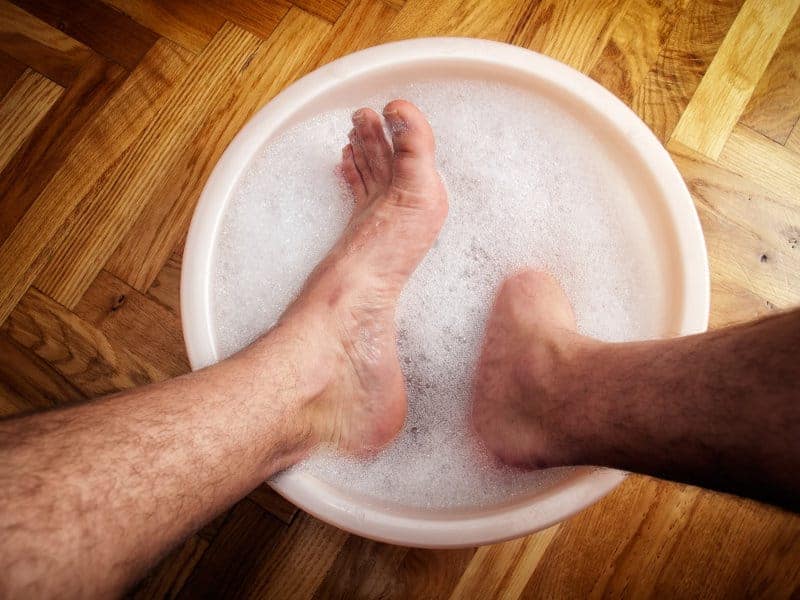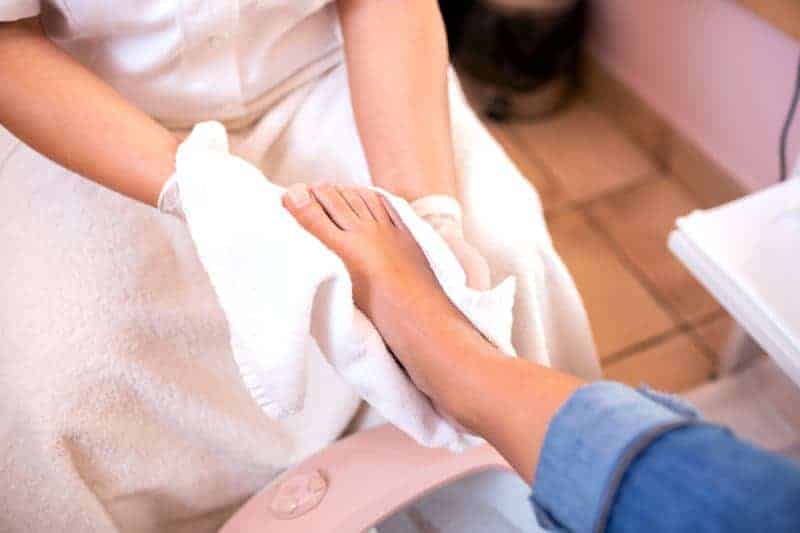
Foot Rot, also called athlete’s foot or the medical term, tinea pedis, is a fungal infection that commonly grows on the feet. The fungus – Trichophyton Rubrum – can spread to other parts of the body, such as the nails, causing fungal nail infections.
The term – athlete’s foot – is so named because the fungus that causes foot rot thrives in places where athletes are usually at, like locker rooms and showers where the environmental conditions are warm and moist. Regardless of this fact, it is still possible to contract this fungal infection almost anywhere, directly or indirectly.
The good news is this fungus is largely harmless. As long as the skin is kept dry and clean, their reproduction and spread are limited. We will look at some usual causes, symptoms, and how to manage foot rot easily without needing to visit your local doctor.
Causes of Foot Rot

Source: Pexels
Everyone is susceptible to contracting Foot Rot and it has nothing to do with cleanliness. Even if you wash your feet several times daily, you can still be at risk especially if you do not dry your feet thoroughly after washing.
Besides visiting public places like the swimming pools and communal shower rooms, wearing tight, closed-toe shoes and thick socks are likely triggers for fungi growth on your feet. Each foot has over 250,000 sweat glands producing 300-400 mL of sweat per day, leading to a very warm, moist environment inside your shoes and a perfect thriving place for the fungi. So having sweaty feet means higher chances of moistness in that area, and higher susceptibility to Foot Rot.
While Foot Rot is often transmitted through touching surfaces contaminated with the fungus – from shoes, socks, towels, clothing, or even puddles of water, it is also highly contagious and can be passed on through direct skin contact with anyone who is infected. This is especially important for those with weakened immune systems as infections are more likely to occur and are harder to manage , hence proper medical attention needs to be given.
Symptoms of Foot Rot

Foot Rot usually causes a burning, stinging sensation, starting from the toes or the soles of the feet and spreading to other areas. Redness and itching are also common symptoms, whereas some people experience cracking and flaking of the skin as well. The infected area will tend to feel raw and dry.
If the infection has spread to the nails, your toenails will appear discoloured and thick or may even start to pull away from the nail bed. While some of the symptoms may mimic those of eczema, having most or all of the symptoms that persist for days will most likely be a Foot Rot condition.
Care Management for Foot Rot Without Seeing a Doctor
Fortunately for most people, foot rot is easily managed and curable with home remedies and over-the-counter medication once symptoms are recognised. Here are a few ways on how to manage Foot Rot without having to make a doctor’s visit, provided that you don’t have an existing medical condition, such as diabetes.
Foot Soaks

One of the most popular home remedies is a foot soak, mainly saltwater or vinegar.
Why vinegar? It is a diluted form of acetic acid that’s inexpensive and easy to find anywhere. According to a study, vinegar is a powerful antifungal solution, which has been used to manage various ailments besides being a cooking ingredient. Thus, vinegar has been found to be one of the best manage s for Foot Rot by slowing or halting the growth of fungi.
While it’s not a miracle manage , it has been proven effective for mild forms of fungus infections with little risks. To make a foot soak, dilute 1-part vinegar to 2-parts water initially, increasing the amount of vinegar if you need a stronger soak. If the smell is intoxicating, try adding some essential oils into the soak. It is recommended to soak your feet for a minimum of 10-15 minutes daily until the infection subsides.
It is also good to soak your socks and towels in vinegar as well, as prevention from recurrence.
If you want to try an alternative foot soak, polyphenols in green tea have been touted to contain antifungal powers, which can alleviate infections. Make sure you use lukewarm water to steep the tea for at least 5 minutes before beginning the soak.
Natural Oils

Source: Kelly Sikkema on Unsplash
Tea tree oil has a long history of being an antifungal and antibacterial powerhouse. Used in cosmetics, especially acne medications, this healing oil has been shown to manage and manage Foot Rot within weeks of daily application. To use, mix warm coconut oil with tea tree oil at a concentration of 25 to 50 per cent tea tree oil. For example, ½ tsp of tea tree oil with 1 tsp coconut oil, then apply it to the infected area once or twice daily.
A lesser-known oil that has been used to manage fungal infection is neem oil. This oil also comes as a leaf extract and either can be applied directly on the affected areas daily. When using oil care management, a light massage is the best way of an application so the oil can slowly be absorbed into the skin.
Dry and Clean Feet

As mentioned, the fungus causing foot rot lives well in damp, wet conditions so keeping dry feet will prevent them from growing and multiplying. While keeping your feet clean is important, it is more crucial to keep them dry, especially between the toes. Try to avoid excessive showering and use clean towels and bedding whenever possible.
When at home, try to go barefoot to air out your feet or wear open-toe home slippers to avoid encouraging moist environments where fungus will potentially be present.
Think Twice About Footwear

Shoes made out of breathable materials are perfect in the prevention of fungus infections. It is also best to alternate your footwear, wearing each pair every other day and disinfecting them after each use with disinfectant or antibacterial wipes or sprays. This allows your shoes to dry out completely before wearing them again, reducing moisture that can be trapped after usage. While it is recommended to wear sandals around public areas, such as swimming pools and shower rooms, try not to share footwear with others due to the highly contagious nature of the Foot Rot infection.
For socks, natural fibres such as cotton or wool are popular choices but not the best ones as the materials tend to retain moisture. Thus, synthetic fibre socks are the better choice as they do a good job in wicking sweat and moisture from the feet. Washing your socks after each use or a heavy workout session is a good prevention method as well.
Over-the-Counter Medication
There are a few topical antifungal medications available as one of the ways to manage foot rot, including but not limited to clotrimazole, miconazole (Desenex). terbinafine (Lamisil AT), and butenafine (Lotrimin Ultra). These can be applied directly to the affected skin areas.
However, over-the-counter medication is only effective for mild symptoms. In severe cases or when managing elderly patients, pregnant women, or children, a doctor’s visit is still necessary for a clearer diagnosis and prescription of more powerful antifungal oral medications in appropriate doses.
The effect of medication varies by individual. While most cases tend to clear up quickly, others may take a couple of weeks or even months to subside completely. Certain medications such as clotrimazole can harbour side effects including burning, stinging, swelling, pimple-like bumps, or flaky skin so it is still the best idea to seek a professional opinion or if there are existing allergies that need tending to.
Getting a Second Opinion
Every infection is unique and there is no one-all solution. It is always recommended to schedule a visit with your local podiatrist when conditions worsen or if you’ve tried all the remedies listed above but have seen no improvements to your condition.
At My FootDr Singapore, we will conduct a thorough examination of your infected areas of the skin and toenails before offering a viable solution to manage your Foot Rot condition and to restore healthy feet.
